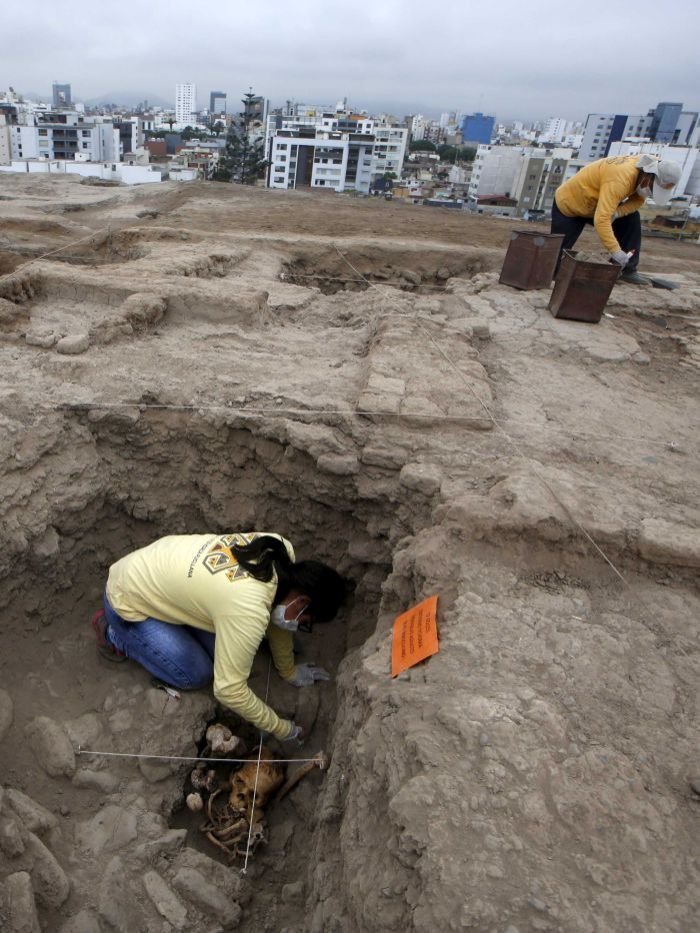In a cemetery that is shaped like a pyramid and is located in the middle of Lima, the capital of Peru, archaeologists claim to have found graves that are over 1,000 years old.
At Huaca Pucllana, a ceremonial complex in the Miraflores neighborhood, “there are four human burial sites for adult humans, three ladies and one guy, who lived between the years 1000 and 1450,” said archaeologist Isabel Flores, program director.

Four pre-hispanic Ichma culture tombs have been found in the Huaca Pucllana ceremonial complex in Lima [Credit: Reuters/Mariana Bazo]
The discovery attests to the Ichma culture’s historical presence in Lima. Around the year 1000, the indigenous Ichma civilisation, which was thriving in the area, moved to the Rimac Valley on Peru’s central coast.
Around 1450, when the Inca civilisation started to spread, the culture vanished.
“These are the first four tombs of the Ichma culture,” Ms Flores said.
The tombs featured seated remains, looking toward the sea, wrapped up in textile and hand-woven natural materials alongside offerings such as ceramics and weaving tools. Ms Flores has been researching the site for more than three decades and also runs the Huaca Pucllana Museum.

The tombs had characteristics of the Ischma culture. Credits: AP
She said they “may still find more” tombs at the Huaca Pucllana complex despite long-term looting.
“This is the first district in the country that has more than 1,500 years of known history to date,” she said. In Lima alone, there are some 350 “huacas” — the indigenous Quechua-language word for these ceremonial complexes, most of which predate Spanish colonization.
The Ichma people inhabited Pachacamac (40 km southeast of Lima, Peru, in the Valley of the Lurin River) and continued the growth and influence of the city.
The Ichma people constructed at least 16 pyramids in Pachacamac, and built or remodeled more structures in the Lima area.
AncientPages.com








